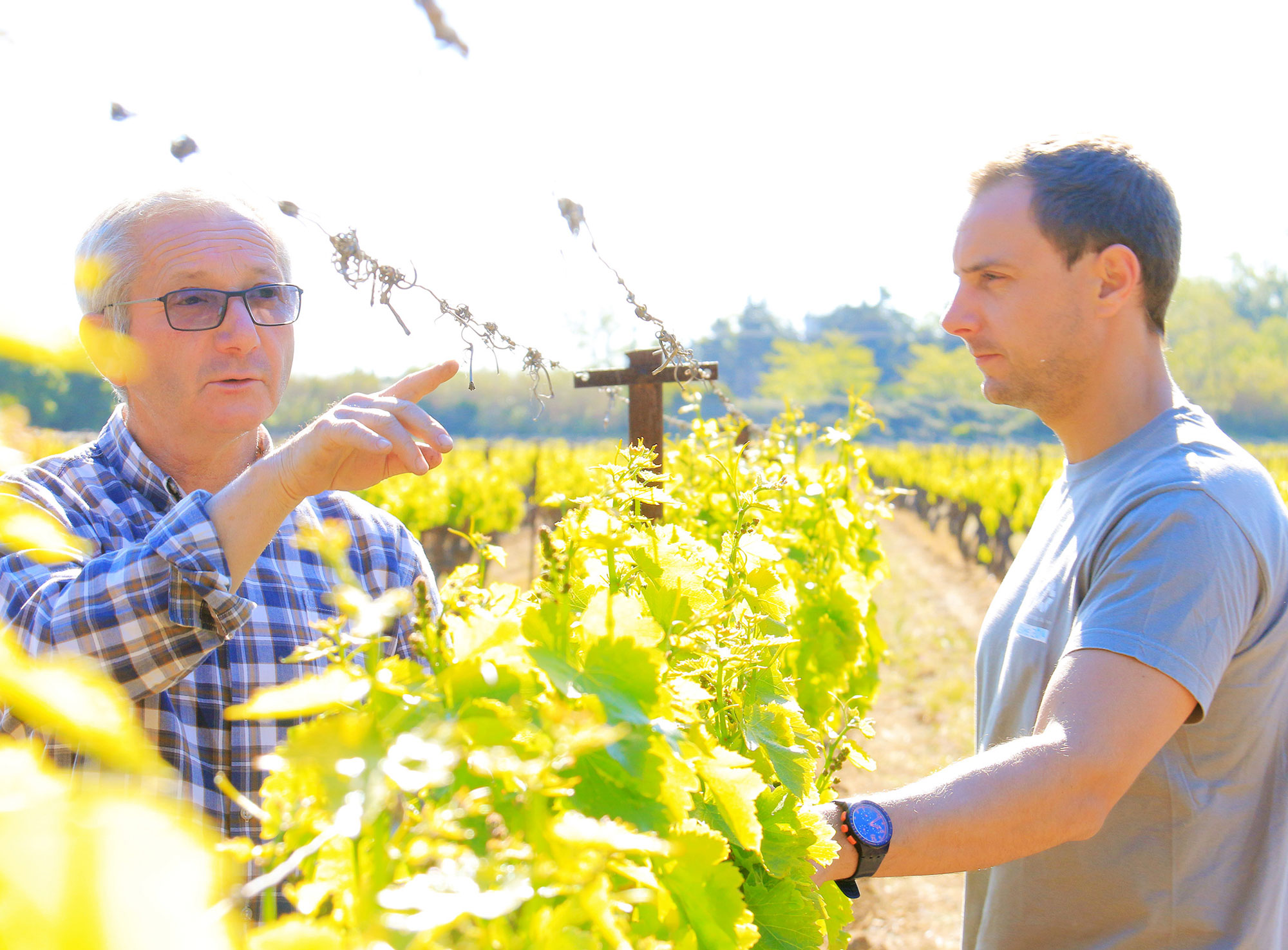Domaine de Rombeau Rancio Sec 2008

|

|
The most evolved of the Rombeau Rancio secs, the 2008 exhibits a pleasing "rancio funk" while nevertheless retaining its complexity and rough good manners. It was vinified in tank with native yeasts, then transferred to an assortment of old barrels and glass demijohns for 12-18 months' aging outdoors. A portion was then returned to the cellars, which rest above ground and lack temperature control, while another portion remained in the "barrel park" until the time of blending and bottling in mid-2016.
The wine is said to have up to 70% Grenache blanc, with smaller amounts of Grenache gris, Macabeu and Malvoisie du Roussillon (Tourbat). It is best as a digestif, or with richer cheeses including sweeter blues. Shelf-stable, it should be served lightly chilled or at cellar temperature.
(50-65ºF)
(55-64ºF)
(59-64ºF)
About Domaine de Rombeau
 Base map data ©2017 Google, Inst. Geogr. Nacional
Base map data ©2017 Google, Inst. Geogr. NacionalOne of the most storied estates in Roussillon, Domaine de Rombeau traces its origins to 1727, when the de la Fabrègue family first arrived in Rivesaltes from Lyon. By 1850, the family had amassed significant vineyard holdings and became of one the region’s first to bottle wine. Tanks that date from that period can still be found on the estate. The family persevered through phyolloxera and successive World Wars, continually delving deeper into the region’s traditions while remaining open to the possibilities of the future. As sixth-generation family winemaker Philippe Raspaud has said: "Tradition is alive."
Today, Rombeau farms 90 hectares from a variety of different terroirs under sustainable, organic and biodynamic practices, producing an array of wines including Muscat de Rivesaltes, Rivesaltes, Côtes du Roussillon and Côtes du Roussillon-Villages. They are most famous and celebrated for their cellar of old Rivesaltes, with vintages extending back to the early 1960s still in barrel, as well as for their Rancio sec, which includes elevage outdoors in glass bonbonnes and barrels before blending with the help of Rivesaltes legend Fernand Baixas. These are intentional wines, combining the best of traditional practice with modern acumen to produce vintage wines of both power and elegance—a benchmark of what Rancio sec and Rivesaltes was, is and can be. Full details
About Côtes Catalanes IGP
One of the most dynamic IGPs in the greater Languedoc-Roussillon wine region, the Côtes Catalanes IGP encompasses nearly all of the Pyrénées-Orientales administrative départment and most of its appellations: Côtes du Roussillon and Côtes du Roussillon-Villages; Grand Roussillon; Maury and Maury sec; Rivesaltes and Muscat de Rivesaltes. (The diminutive Banyuls and Collioure AOPs are covered by Côte Vermeille IGP.) The climate is Mediterranean, but the terroir itself is quite varied: dark schist, granite, gneiss and clay-limestone soils along its northern slopes; dry, garrigue-scented clay, sand and gravel on the plains around Perpignan. Temperatures, some of France’s most extreme, are moderated by maritime influence and the proximity of the snow-capped Pyrénées. The best hillside slopes cool considerably at night, retaining acidity and freshness in the grapes.
Under the Côtes Catalanes IGP, independent vignerons and cooperatives produce mono-varietal expressions (e.g., Domaine Jorel Carignan ‘Male Care’) not currently endorsed under existing AOPs, as well as wines from international varieties (Chardonnay, Sauvignon blanc, Cabernet Sauvignon) that have increasingly found favor amongst some growers and cooperatives. Ironically, the region’s most traditional wine, Rancio Sec - unfortified and fully-oxidized - is also its rarest and falls under the auspices of the Côtes Catalanes (and Côte Vermeille) IGP.
| SKU | Vintage | Region | Origin | Desc | Cepage | % Alc | Size/Pack | Finish | BTL Barcode | Cs Barcode | Cs Wgt |
|---|---|---|---|---|---|---|---|---|---|---|---|
| HZ 6845 | 2008 | Roussillon | FR | Oxidative/Oxidized Wine; Dry | Grenache blanc, Grenache gris, Macabeu | 16.5% | 750/6 | cork | 3760035695677 | N/A | 7.80 kg |
Downloads:



